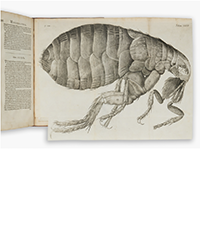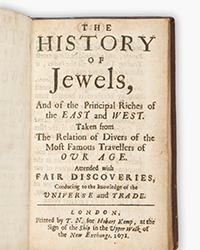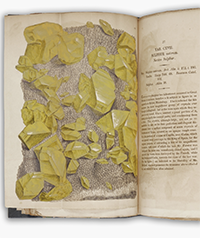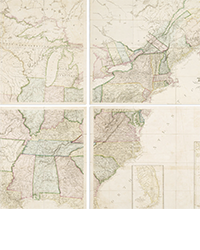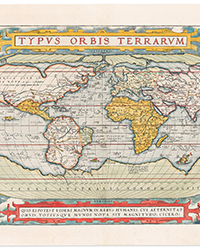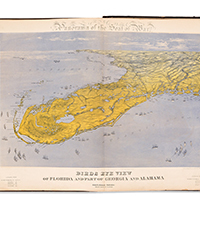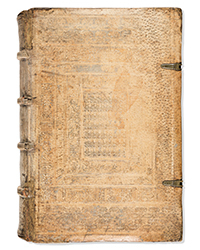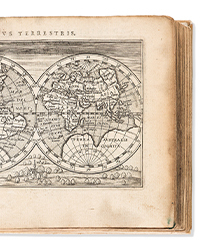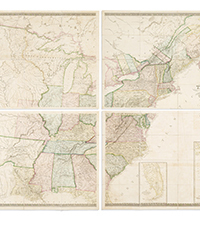This story completes our trilogy of stories this month about book banning (see the others elsewhere in this issue). From Ohio we have seen a bill that has been offered that would turn librarians and teachers into felons if they put the wrong books on their shelves. From Minnesota, we saw the opposite, a newly passed law that bans book banning. This story splits the difference. Some books are removed, others are returned to their shelves. However, this is not a final judgment.
The case arose in Llano County, Texas. A group of residents petitioned the library to remove some allegedly “pornographic and overtly sexual books in the library’s children’s section.” That was later expanded to include a couple of books about race. The head librarian, at the urging of local officials, removed 17 books. In response, a group of library patrons sued to have the books returned to the shelves. They sought to obtain a preliminary injunction to bring back the books. This is not a suit on the merits of the case. This is simply an attempt to return the books while the main lawsuit drags on. You need to show that you will be damaged if an injunction is not granted and you are likely to win the case on the merits. The lower court ruled for the patrons, issuing the preliminary injunction sought.
The county appealed. The appeal was heard by a group of three judges from the Fifth Circuit U. S. Court of Appeals. One judge voted to issue the injunction and put the books back on the shelves. Another judge voted to allow the library to keep all of the books off of them. The third judge split the difference, ordering eight books returned while nine could remain stashed away. What this meant is that a 2-1 majority wanted the eight books kept on the shelves, while a different 2-1 majority wanted the other nine removed. Majority rules, so eight made the cut, nine did not.
What was the difference? Was it an attempt, as close as possible with an uneven number, to split them in half? No. Case law has determined that the First Amendment (free speech) prohibits silencing books based on the ideas expressed. The court determined that eight of the books expressed serious ideas and consequently it was impermissible to silence their content. The other nine did not contain such deep ideas and opinions and consequently could be removed at the library's desire.
These are the eight books that lived to be read another day.
a. Caste: The Origins of Our Discontent by Isabel Wilkerson
b. They Called Themselves the K.K.K: The Birth of an American Terrorist Group by Susan Campbell Bartoletti
c. Spinning by Tillie Walden
d. Being Jazz: My Life as a (Transgender) Teen by Jazz Jennings
e. Shine by Lauren Myracle
f. Under the Moon: A Catwoman Tale by Lauren Myracle
g. Gabi, a Girl in Pieces by Isabel Quintero
h. Freakboy by Kristin Elizabeth Clark
What is clear from the list is that the county officials were keen on banning books about minorities, those classified as LGBTQ in particular.
Those books deemed not so weighty in ideas that removing them was acceptable under the First Amendment were:
a. It’s Perfectly Normal: Changing Bodies, Growing Up, Sex and Sexual Health by Robie Harris
b. In the Night Kitchen by Maurice Sendak (This is not a joke. Sendak illustrated a naked child).
c.-i. Seven books described as the “butt and fart books”*
Here is a hint for aspiring young writers – try very hard not have your works classified as “butt and fart books.” Shakespeare, Tolstoy, Twain never wrote “butt and fart books.” There is something about writing great literature to be learned from this.
* Do you really want to know what the “butt and fart books” were? Seriously? Well, here are the Magnificent Seven: My Butt is So Noisy!, I Broke My Butt!, and I Need a New Butt! by Dawn McMillan, Larry the Farting Leprechaun, Gary the Goose and His Gas on the Loose, Freddie the Farting Snowman, and Harvey the Heart Has Too Many Farts by Jane Bexley. If utterly lacking in redeeming social value was the test, these would be gone. As I understand the reason why libraries put this bunch on their shelves, it is to encourage children to read. These are topics it is believed children will find humorous and entertaining and so they will read. It's sort of like putting sugar and chocolate syrup on your children's broccoli to get them to eat it. Is it really worth it? Don't today's children find Dr. Seuss more entertaining than My Butt is So Noisy? What is wrong with them?



![<b>Scandinavian Art & Rare Books Auctions, Dec. 4:</b> ROALD AMUNDSEN: «Sydpolen» [ The South Pole] 1912. First edition in jackets and publisher's slip case. <b>Scandinavian Art & Rare Books Auctions, Dec. 4:</b> ROALD AMUNDSEN: «Sydpolen» [ The South Pole] 1912. First edition in jackets and publisher's slip case.](https://ae-files.s3.amazonaws.com/AdvertisementPhotos/0a99416d-9c0f-4fa3-afdd-7532ca8a2b2c.jpg)
![<b>Scandinavian Art & Rare Books Auctions, Dec. 4:</b> AMUNDSEN & NANSEN: «Fram over Polhavet» [Farthest North] 1897. AMUNDSEN's COPY! <b>Scandinavian Art & Rare Books Auctions, Dec. 4:</b> AMUNDSEN & NANSEN: «Fram over Polhavet» [Farthest North] 1897. AMUNDSEN's COPY!](https://ae-files.s3.amazonaws.com/AdvertisementPhotos/a077b4a5-0477-4c47-9847-0158cf045843.jpg)
![<b>Scandinavian Art & Rare Books Auctions, Dec. 4:</b> ERNEST SHACKLETON [ed.]: «Aurora Australis» 1908. First edition. The NORWAY COPY. <b>Scandinavian Art & Rare Books Auctions, Dec. 4:</b> ERNEST SHACKLETON [ed.]: «Aurora Australis» 1908. First edition. The NORWAY COPY.](https://ae-files.s3.amazonaws.com/AdvertisementPhotos/6363a735-e622-4d0a-852e-07cef58eccbe.jpg)
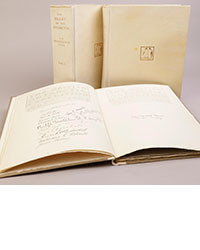
![<b>Scandinavian Art & Rare Books Auctions, Dec. 4:</b> SHACKLETON, BERNACCHI, CHERRY-GARRARD [ed.]: «The South Polar Times» I-III, 1902-1911. <b>Scandinavian Art & Rare Books Auctions, Dec. 4:</b> SHACKLETON, BERNACCHI, CHERRY-GARRARD [ed.]: «The South Polar Times» I-III, 1902-1911.](https://ae-files.s3.amazonaws.com/AdvertisementPhotos/3ee16d5b-a2ec-4c03-aeb6-aa3fcfec3a5e.jpg)
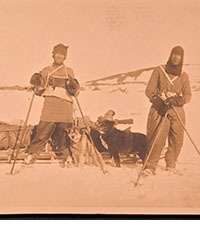
![<b>Scandinavian Art & Rare Books Auctions, Dec. 4:</b> [WILLEM BARENTSZ & HENRY HUDSON] - SAEGHMAN: «Verhael van de vier eerste schip-vaerden […]», 1663. <b>Scandinavian Art & Rare Books Auctions, Dec. 4:</b> [WILLEM BARENTSZ & HENRY HUDSON] - SAEGHMAN: «Verhael van de vier eerste schip-vaerden […]», 1663.](https://ae-files.s3.amazonaws.com/AdvertisementPhotos/d5f50485-7faa-423f-af0c-803b964dd2ba.jpg)
![<b>Scandinavian Art & Rare Books Auctions, Dec. 4:</b> TERRA NOVA EXPEDITION | LIEUTENANT HENRY ROBERTSON BOWERS: «At the South Pole.», Gelatin Silver Print. [10¾ x 15in. (27.2 x 38.1cm.) ]. <b>Scandinavian Art & Rare Books Auctions, Dec. 4:</b> TERRA NOVA EXPEDITION | LIEUTENANT HENRY ROBERTSON BOWERS: «At the South Pole.», Gelatin Silver Print. [10¾ x 15in. (27.2 x 38.1cm.) ].](https://ae-files.s3.amazonaws.com/AdvertisementPhotos/fb024365-7d7a-4510-9859-9d26b5c266cf.jpg)
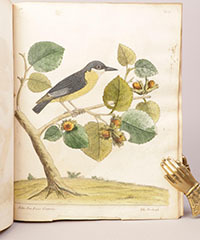
![<b>Scandinavian Art & Rare Books Auctions, Dec. 4:</b> PAUL GAIMARD: «Voyage de la Commision scientific du Nord, en Scandinavie, […]», c. 1842-46. ONLY HAND COLOURED COPY KNOWN WITH TWO ORIGINAL PAINTINGS BY BIARD. <b>Scandinavian Art & Rare Books Auctions, Dec. 4:</b> PAUL GAIMARD: «Voyage de la Commision scientific du Nord, en Scandinavie, […]», c. 1842-46. ONLY HAND COLOURED COPY KNOWN WITH TWO ORIGINAL PAINTINGS BY BIARD.](https://ae-files.s3.amazonaws.com/AdvertisementPhotos/a7c0eda0-9d8b-43ac-a504-58923308d5a4.jpg)
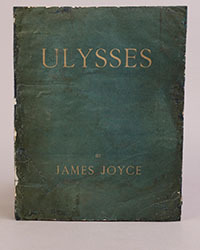

![<b>Sotheby’s, Dec. 11:</b> Darwin and Wallace. On the Tendency of Species to form Varieties..., [in:] <i>Journal of the Proceedings of the Linnean Society,</i> Vol. III, No. 9., 1858, Darwin announces the theory of natural selection. £100,000 to £150,000. <b>Sotheby’s, Dec. 11:</b> Darwin and Wallace. On the Tendency of Species to form Varieties..., [in:] <i>Journal of the Proceedings of the Linnean Society,</i> Vol. III, No. 9., 1858, Darwin announces the theory of natural selection. £100,000 to £150,000.](https://ae-files.s3.amazonaws.com/AdvertisementPhotos/00d5fd41-2542-4a80-b119-4886d4b9925f.png)


